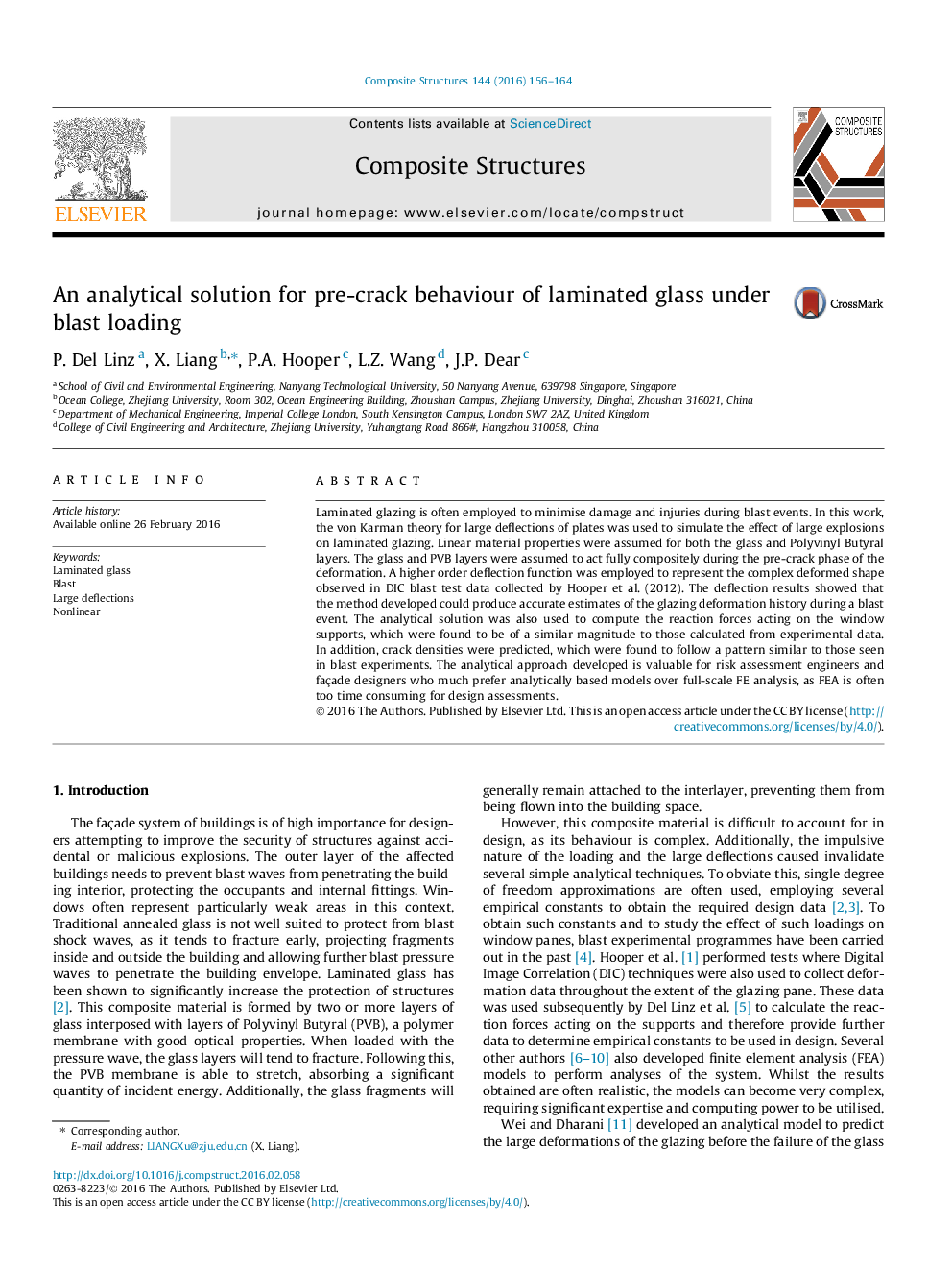| Article ID | Journal | Published Year | Pages | File Type |
|---|---|---|---|---|
| 6705730 | Composite Structures | 2016 | 9 Pages |
Abstract
Laminated glazing is often employed to minimise damage and injuries during blast events. In this work, the von Karman theory for large deflections of plates was used to simulate the effect of large explosions on laminated glazing. Linear material properties were assumed for both the glass and Polyvinyl Butyral layers. The glass and PVB layers were assumed to act fully compositely during the pre-crack phase of the deformation. A higher order deflection function was employed to represent the complex deformed shape observed in DIC blast test data collected by Hooper et al. (2012). The deflection results showed that the method developed could produce accurate estimates of the glazing deformation history during a blast event. The analytical solution was also used to compute the reaction forces acting on the window supports, which were found to be of a similar magnitude to those calculated from experimental data. In addition, crack densities were predicted, which were found to follow a pattern similar to those seen in blast experiments. The analytical approach developed is valuable for risk assessment engineers and façade designers who much prefer analytically based models over full-scale FE analysis, as FEA is often too time consuming for design assessments.
Related Topics
Physical Sciences and Engineering
Engineering
Civil and Structural Engineering
Authors
P. Del Linz, X. Liang, P.A. Hooper, L.Z. Wang, J.P. Dear,
